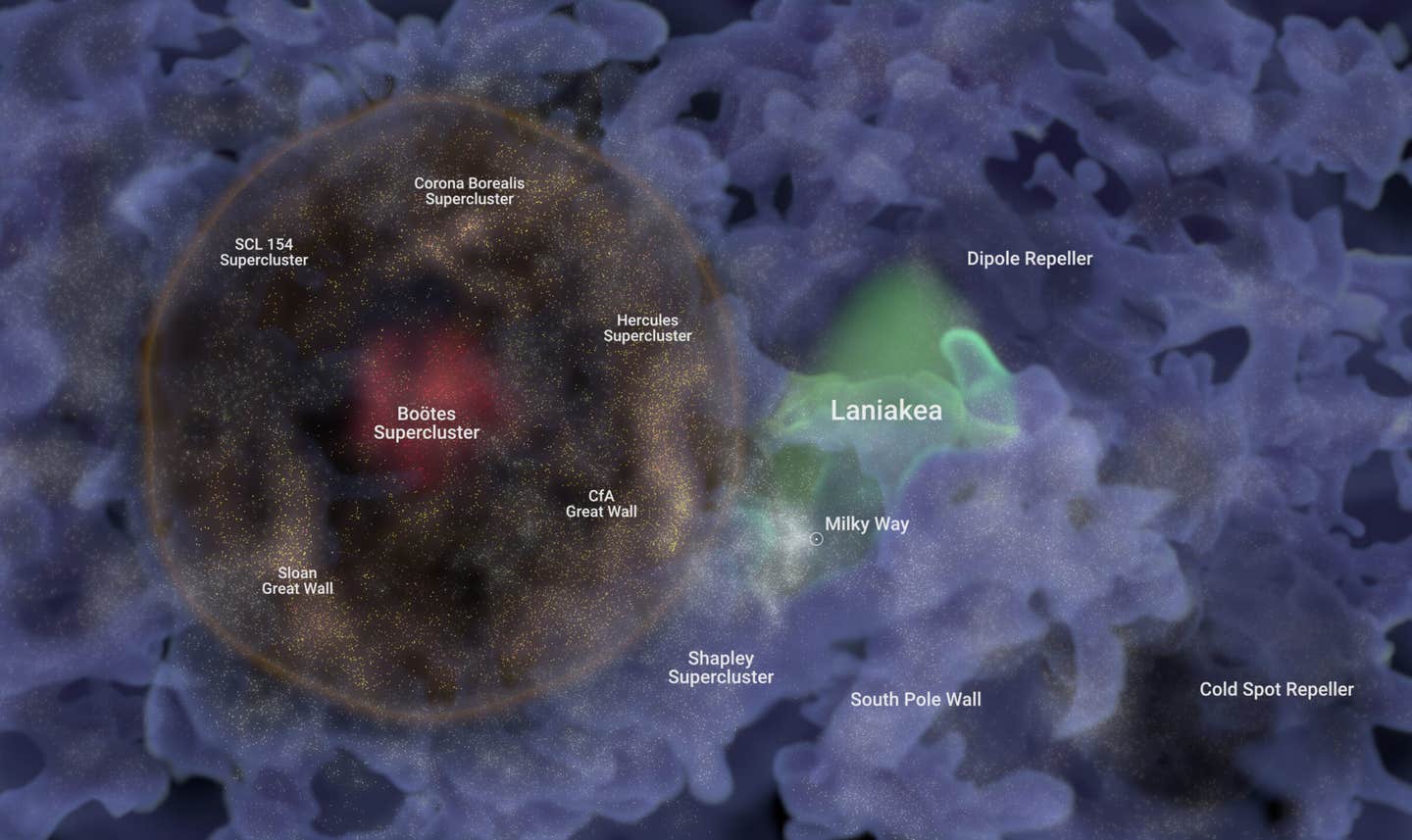New optical ‘transistor’ leads to 1,000x faster computations
Team has created an extremely energy-efficient optical switch that could replace electronic transistors in a new generation of computers.

[Sept 27, 2021: SKOLKOVO INSTITUTE OF SCIENCE AND TECHNOLOGY (SKOLTECH)]
An international research team led by Skoltech and IBM has created an extremely energy-efficient optical switch that could replace electronic transistors in a new generation of computers manipulating photons rather than electrons. In addition to direct power saving, the switch requires no cooling and is really fast: At 1 trillion operations per second, it is between 100 and 1,000 times faster than today’s top-notch commercial transistors. The study comes out Wednesday in Nature.
“What makes the new device so energy-efficient is that it only takes a few photons to switch,” the first author of the study, Dr. Anton Zasedatelev commented. “In fact, in our Skoltech labs we achieved switching with just one photon at room temperature! That said, there is a long way to go before such proof-of-principle demonstration is utilized in an all-optical co-processor,” added Professor Pavlos Lagoudakis, who heads the Hybrid Photonics Labs at Skoltech.
Since a photon is the smallest particle of light that exists in nature, there is really not much room for improvement beyond that as far as power consumption goes. Most modern electrical transistors take tens of times more energy to switch, and the ones that use single electrons to achieve comparable efficiencies are way slower.
Besides performance issues the competing power-saving electronic transistors also tend to require bulky cooling equipment, which in turn consumes power and factors into the operating costs. The new switch conveniently works at room temperature and therefore circumvents all these problems.
In addition to its primary transistor-like function, the switch could act as a component that links devices by shuttling data between them in the form of optical signals. It can also serve as an amplifier, boosting the intensity of an incoming laser beam by a factor of up to 23,000.
How it works
The device relies on two lasers to set its state to “0” or “1” and to switch between them. A very weak control laser beam is used to turn another, brighter laser beam on or off. It only takes a few photons in the control beam, hence the device’s high efficiency.
The switching occurs inside a microcavity — a 35-nanometer thin organic semiconducting polymer sandwiched between highly reflective inorganic structures. The microcavity is built in such a way as to keep incoming light trapped inside for as long as possible to favor its coupling with the cavity’s material.
This light-matter coupling forms the basis of the new device. When photons couple strongly to bound electron-hole pairs — aka excitons — in the cavity’s material, this gives rise to short-lived entities called exciton-polaritons, which are a kind of quasiparticles at the heart of the switch’s operation.
When the pump laser — the brighter one of the two — shines on the switch, this creates thousands of identical quasiparticles in the same location, forming so-called Bose-Einstein condensate, which encodes the “0” and “1” logic states of the device.
To switch between the two levels of the device, the team used a control laser pulse seeding the condensate shortly before the arrival of the pump laser pulse. As a result, it stimulates energy conversion from the pump laser, boosting the amount of quasiparticles at the condensate. The high amount of particles in there corresponds to the “1” state of the device.
The researchers used several tweaks to ensure low power consumption: First, efficient switching was aided by the vibrations of the semiconducting polymer’s molecules. The trick was to match the energy gap between the pumped states and the condensate state to the energy of one particular molecular vibration in the polymer.
Second, the team managed to find the optimal wavelength to tune their laser to and implemented a new measurement scheme enabling single-shot condensate detection. Third, the control laser seeding the condensate and its detection scheme were matched in a way that suppressed the noise from the device’s “background” emission. These measures maximized the signal-to-noise level of the device and prevented an excess of energy from being absorbed by the microcavity, which would only serve to heat it up through molecular vibrations.
“There’s still some work ahead of us to lower the overall power consumption of our device, which is currently dominated by the pump laser that keeps the switch on. A route toward that goal could be perovskite supercrystal materials like those we’re exploring with collaborators. They have proven excellent candidates given their strong light-matter coupling which in turn leads to a powerful collective quantum response in the form of superfluorescence,” the team comments.
In the larger scheme of things, the researchers see their new switch as but one in the growing toolkit of all-optical components they have been assembling over the past few years. Among other things, it includes a low-loss silicon waveguide for shuttling the optical signals back and forth between transistors. The development of these components takes us ever closer to optical computers that would manipulate photons instead of electrons, resulting in vastly superior performance and lower power consumption. The research at Skoltech was supported by the Russian Science Foundation (RSF).
Like these kind of feel good stories? Get the Brighter Side of News' newsletter.
Tags: #New_Innovations, #Computers, #Processing_Speed, #Optical_Switch, #Science, #Technology, #Research, #The_Brighter_Side_of_News
Joshua Shavit
Science & Technology Writer | AI and Robotics Reporter
Joshua Shavit is a Los Angeles-based science and technology writer with a passion for exploring the breakthroughs shaping the future. As a contributor to The Brighter Side of News, he focuses on positive and transformative advancements in AI, technology, physics, engineering, robotics and space science. Joshua is currently working towards a Bachelor of Science in Business Administration at the University of California, Berkeley. He combines his academic background with a talent for storytelling, making complex scientific discoveries engaging and accessible. His work highlights the innovators behind the ideas, bringing readers closer to the people driving progress.



